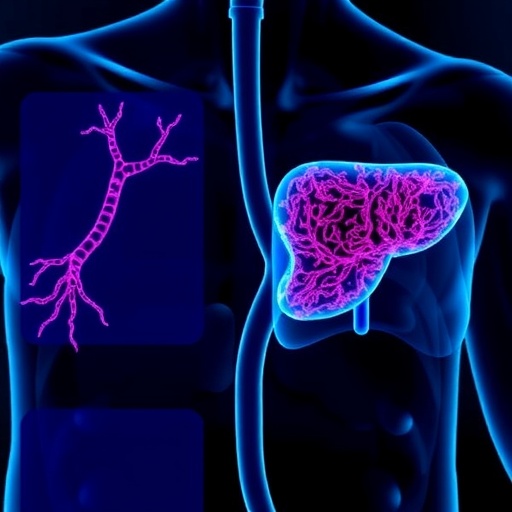In the evolving battlefield against colorectal cancer (CRC), a breakthrough study has emerged that could dramatically reshape how we predict and manage chemotoxicity—an often debilitating side effect of chemotherapy that threatens patient survival and quality of life. Leveraging the power of artificial intelligence and machine learning, researchers have developed sophisticated models that uniquely incorporate race, social determinants of health (SDOH), and biological aging metrics to forecast the risk of chemotoxicity in CRC patients. This innovative approach promises to pave the way for personalized treatment plans that mitigate adverse effects and enhance therapeutic adherence.
Colorectal cancer remains one of the leading causes of cancer-related morbidity worldwide. The aggressive chemotherapy regimens used to combat CRC, while effective, frequently induce a spectrum of toxicities that can severely compromise a patient’s ability to continue treatment. Chemotoxicity affects not only clinical outcomes but also the patient’s quality of life, often resulting in dose reductions, delays, or even discontinuation of therapy. Traditionally, oncologists rely on clinical judgment and general risk factors to anticipate such toxicities, but these methods lack precision and fail to account for the complex interplay between biology and socio-environmental factors.
The novel study harnessed data from 1,735 adult CRC patients, integrating electronic health records with detailed sociodemographic parameters, biological aging indicators, and geospatial deprivation indices. Biological aging was quantified using Levine Phenotypic Age—a method that reflects physiologic decline beyond chronological age by analyzing biomarkers of systemic aging. SDOH variables, such as the Area Deprivation Index (ADI) and employment status, provided critical context about patient environments and socioeconomic challenges, factors increasingly recognized as pivotal in health outcomes.
For model training and validation, the researchers employed six different supervised machine learning algorithms, including Support Vector Machines (SVM) and the advanced XGBoost model. These algorithms were trained on 80% of the patient data, while the remaining 20% was reserved for rigorous testing. Performance metrics focused on accuracy, area under the curve (AUC), and F1-score, ensuring that the models not only identified toxicities effectively but also balanced sensitivity and specificity.
Remarkably, both the SVM and XGBoost models demonstrated exceptional accuracy across all datasets, with the SVM model achieving an AUC of 0.988 in predicting overall chemotoxicity within the training cohort. This high performance underscores the potential of machine learning to discern subtle patterns in multifactorial data that human analysis might overlook. It also marks a significant step toward deploying AI-driven tools in clinical oncology decision-making frameworks.
Among the most influential predictors of overall and gastrointestinal (GI) chemotoxicities were elevated levels of biological aging as measured by Levine Phenotypic Age and increased systemic inflammation, signified by markers such as C-reactive protein. These findings suggest that patients exhibiting accelerated biological aging or chronic inflammatory states are at heightened risk of adverse chemotherapy reactions, indicating a compelling biological basis for toxicity susceptibility.
Beyond biological aging and inflammation, social determinants played a crucial role. Patients residing in disadvantaged neighborhoods with higher ADI scores and those who were unemployed faced greater risks of chemotoxic effects. The study’s integration of geospatial deprivation metrics offers a novel lens through which clinicians can appreciate how extrinsic socioeconomic stressors translate into tangible treatment vulnerabilities, thus broadening the scope of predictive oncology beyond purely molecular parameters.
Interestingly, hematological toxicity presented an inverse pattern; it was associated with lower inflammatory markers but still linked to elevated biological aging and younger chronological age. This dichotomy implies fundamentally different mechanistic pathways underlie various toxicity phenotypes, emphasizing the necessity for tailored predictive models that accommodate these distinctions.
Racialized group identity emerged as an independent modifier of toxicity risk, with non-Hispanic Black patients disproportionately affected by overall and GI toxicities. This disparity remained significant even after adjusting for socioeconomic and biological factors, highlighting persistent systemic inequities that permeate cancer care outcomes. The authors advocate for incorporating race-conscious variables in predictive modeling to ensure equitable and effective clinical interventions.
Lifestyle factors and body mass index (BMI) further modulated toxicity risks, reflecting the complex interplay between individual behaviors, physiologic status, and treatment tolerance. These insights may inform integrative treatment approaches that encompass not only pharmacologic interventions but also supportive measures addressing diet, exercise, and stress management.
Critically, the study offers a template for embedding multidimensional data—encompassing molecular, clinical, and social parameters—into AI-driven predictive tools with tangible clinical utility. Such models can empower oncologists to identify at-risk individuals proactively and implement preemptive strategies, such as the use of anti-inflammatory agents or therapies targeting biological aging pathways, to abrogate toxicity and optimize treatment courses.
Looking forward, these findings encourage a paradigm shift toward precision oncology that transcends tumor genomics and includes patient-centered variables influencing treatment response. By tailoring chemotherapy regimens based on individualized risk profiles, healthcare providers may improve survival outcomes while mitigating the harsh adverse effects that often accompany aggressive cancer therapies.
This research also illustrates the burgeoning role of machine learning in unpacking complex biomedical challenges. As vast amounts of clinical and sociodemographic data become increasingly accessible, AI tools promise to transform raw information into actionable insights, driving innovations in cancer care and beyond.
Crucially, the successful incorporation of SDOH and biological aging into predictive analytics exemplifies the necessity of holistic patient assessment. Oncology’s future arguably resides in multidisciplinary models that address both the biological tumor and the socio-environmental context in which treatment occurs, thereby closing the gap on health disparities.
The deployment of such predictive models in routine clinical settings, however, requires careful validation in diverse patient populations and robust infrastructures to integrate AI outputs with electronic health systems. Ethical considerations—particularly addressing biases within datasets and ensuring equitable access—must guide the translational pathway toward real-world implementation.
In essence, this study represents a monumental stride toward AI-powered personalized medicine in colorectal cancer, one that acknowledges the complex, multifaceted nature of chemotoxicity risk. As translational research continues, the prospect of mitigating chemotherapy side effects through smarter risk stratification and targeted intervention holds promise not just for improving patient experiences but also for enhancing overall cancer control.
By synergizing cutting-edge computational techniques with comprehensive patient profiling, the future of oncology care is poised to become more predictive, precise, and equitable—transforming the daunting challenges of chemotoxicity into manageable aspects of cancer therapy.
Subject of Research: Artificial intelligence and machine learning models predicting chemotoxicity in colorectal cancer by integrating racialized group, social determinants of health, and biological aging metrics.
Article Title: AI-driven chemotoxicity prediction in colorectal cancer: impact of race, SDOH, and biological aging
Article References:
Han, C., Burd, C., Plascak, J. et al. AI-driven chemotoxicity prediction in colorectal cancer: impact of race, SDOH, and biological aging. BMC Cancer 25, 1513 (2025). https://doi.org/10.1186/s12885-025-14831-4
Image Credits: Scienmag.com
DOI: https://doi.org/10.1186/s12885-025-14831-4
Tags: AI in colorectal cancer treatmentbiological aging and cancer riskchemotoxicity management strategiescolorectal cancer research advancementsdata-driven approaches in oncologyimproving quality of life for cancer patientsmachine learning in cancer carepatient-centered cancer therapiespersonalized treatment plans for CRCpredicting chemotherapy toxicityrace and cancer treatment outcomessocial determinants of health in oncology





